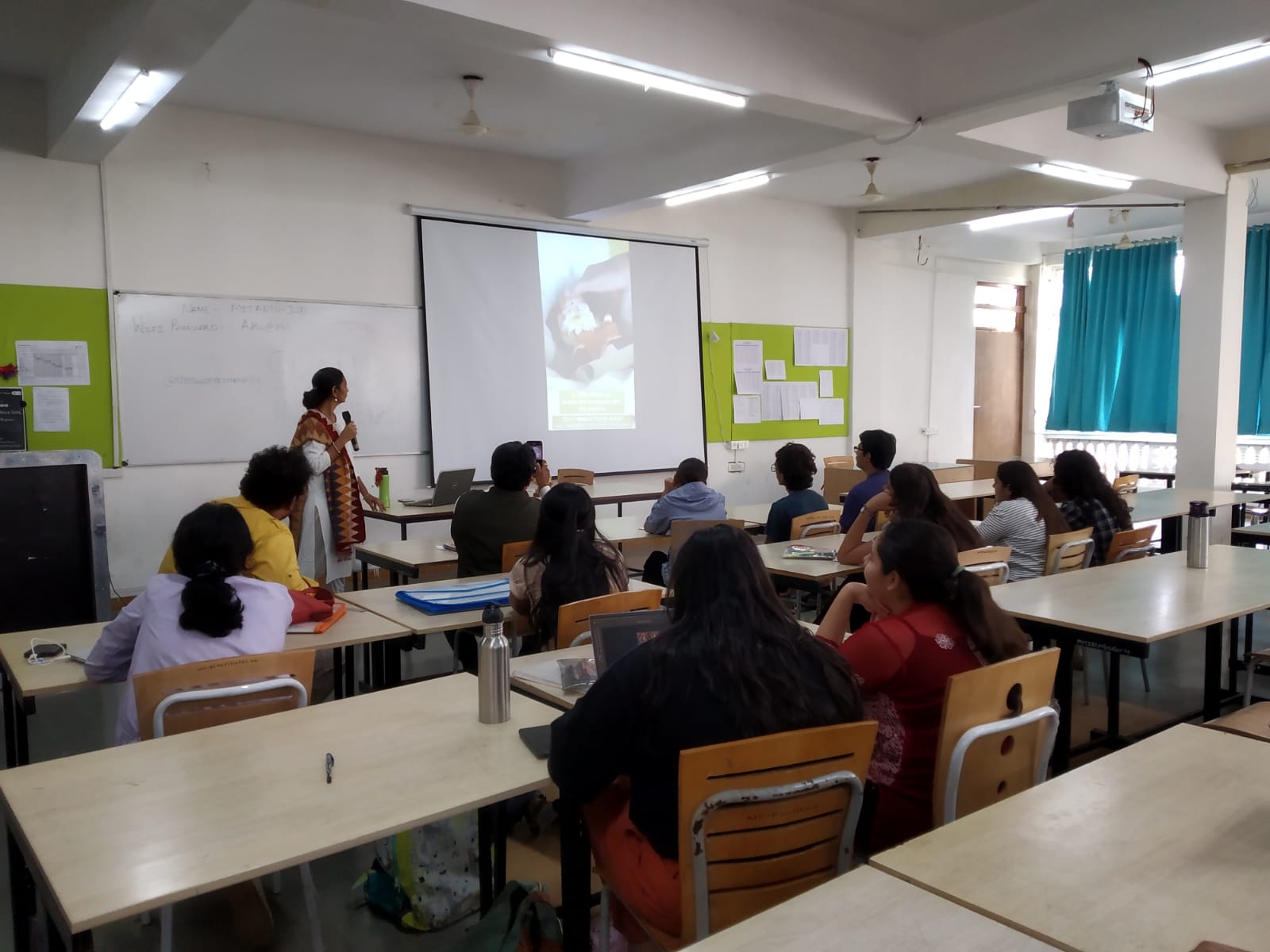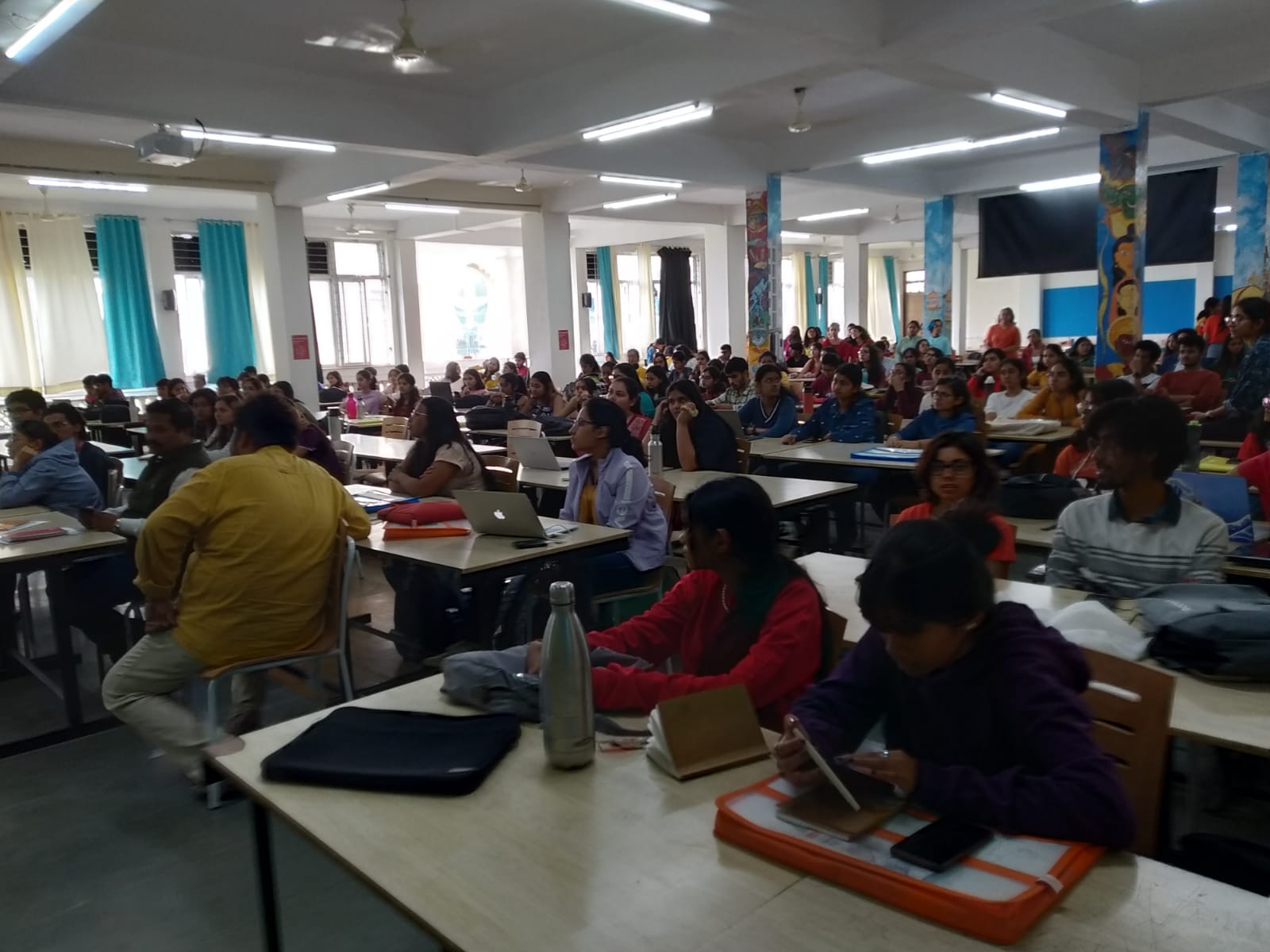REBEARTH Explore the possible reuse applications of the clay sludge with architects, ceramic designers and material experts.
To reuse clay that is of a lower grade in quality , we have sent it out to architects that work with green building in and around Pune with a commitment from them that they will experiment on the applications of this clay at their own cost and share their learnings openly. Over the past two years this is how the clay from Pune has been allocated. The results of their tests in 2023 & 2024 can be seen below …
ARCHITECTS |
FOR |
TESTING |
2022 |
2023 |
2024 tons |
| Anujnaa Maatimol | 9665539976 | Pune | 0 | 0.814 | 6.7 |
| Vaibhavi Agrawal | 9923634393 | Pune | 0 | 1.038 | |
| Satyendra Bhagat | 9325556630 | Pune | 0 | 1.152 | 1 |
| Arti Kirloskar | Pune | 0 | 0.55 | ||
| Dhruvang Hingmire | 9730665522 | Pune | 0 | 0 | 6 |
| Chintamani Dixit | Pune | 0 | 0 | 6 |
REBEARTH 2025 Innovations in clay recycling for sculpture and architecture
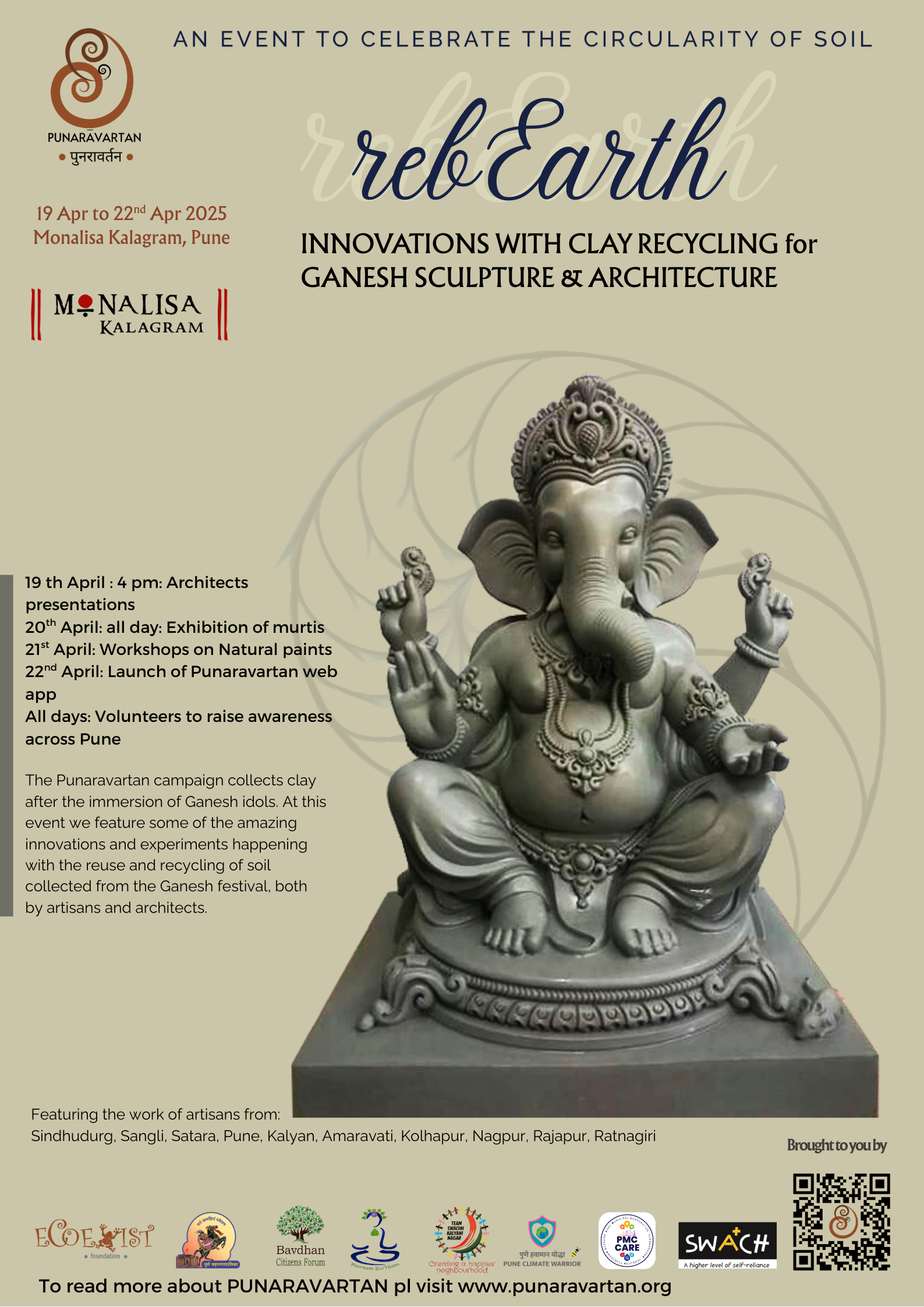
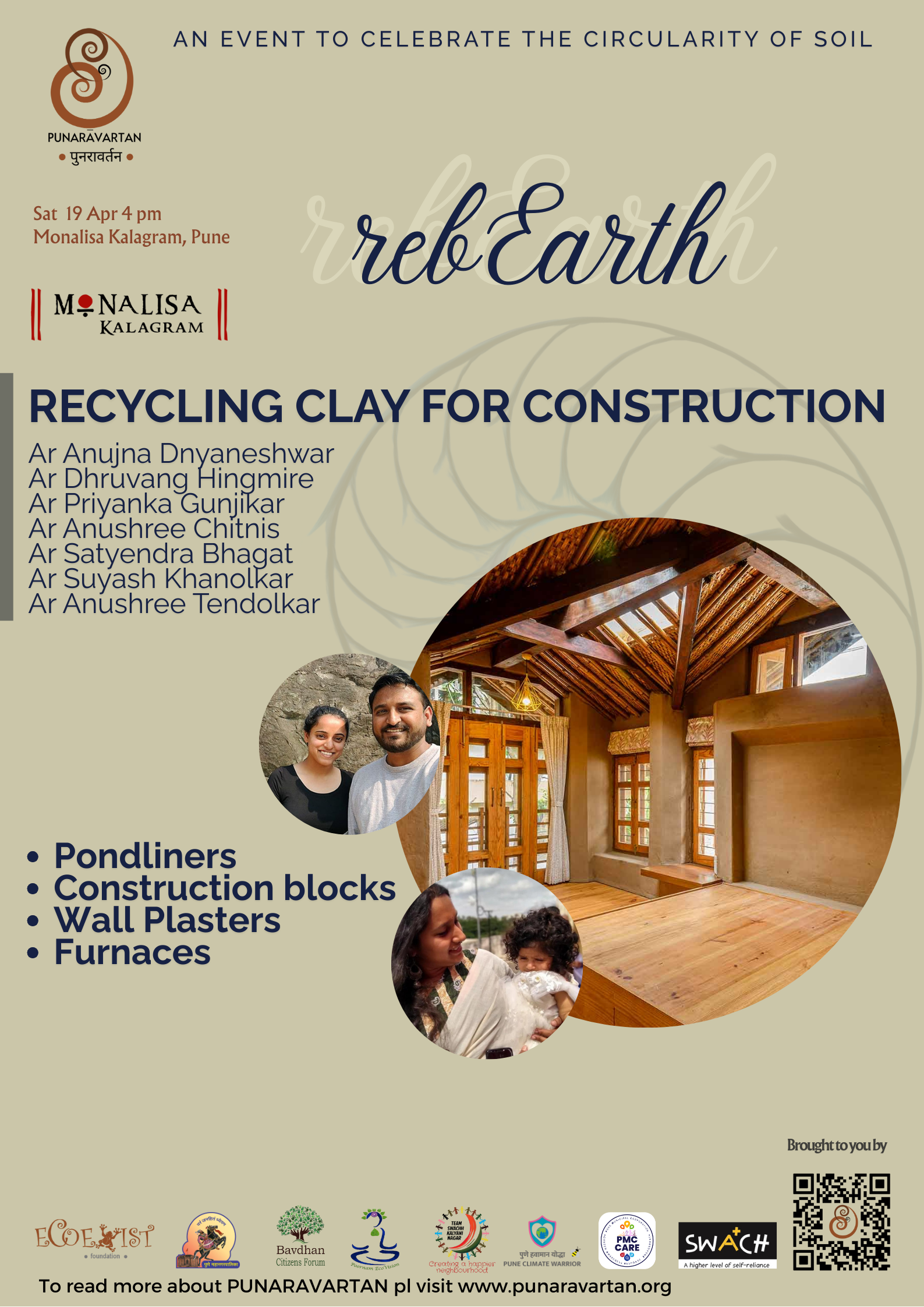
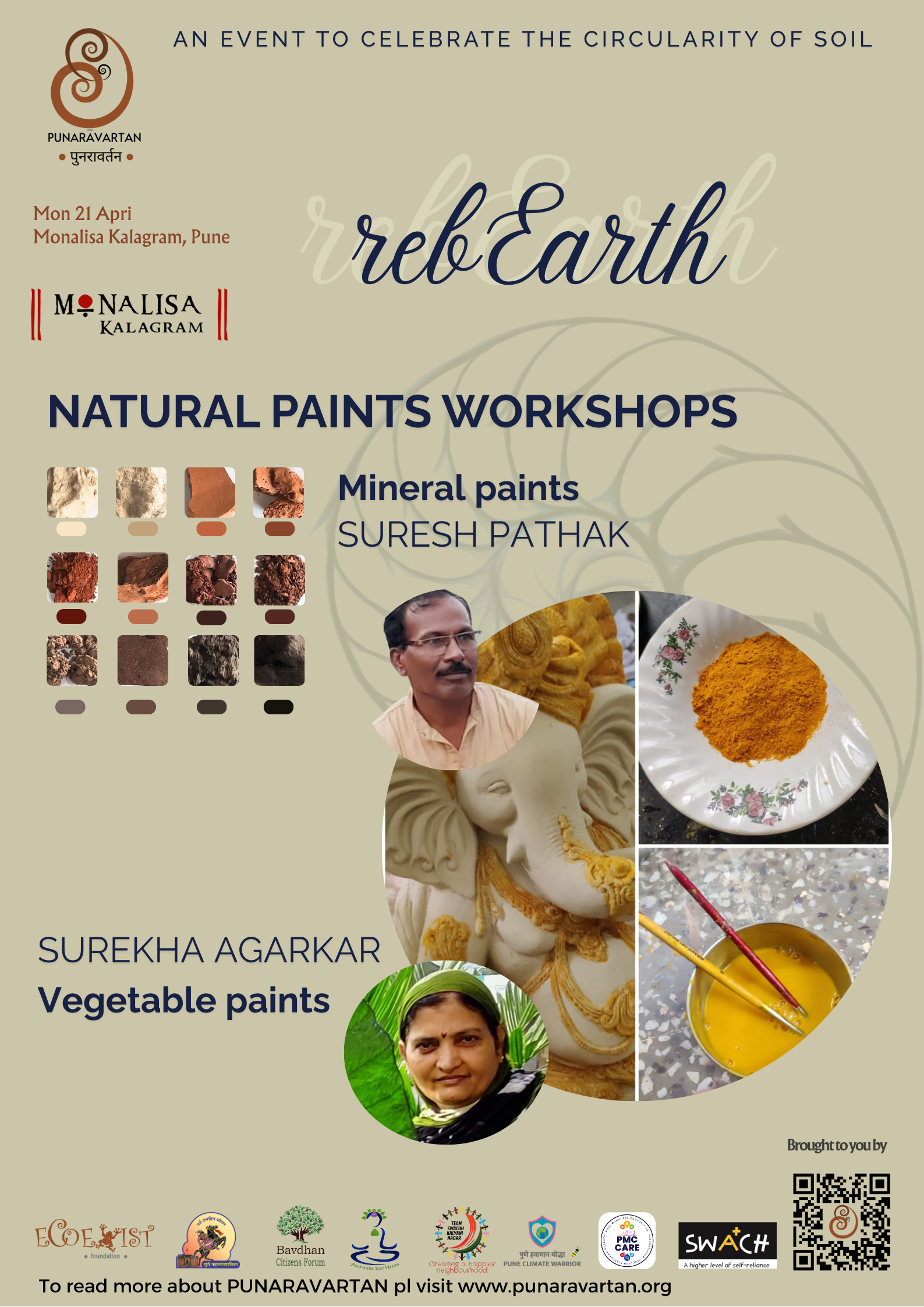

On the occasion of Earth day Punaravartan hosted an event called Rebearth in Pune to highlight the circularity of soil and its potential for reuse.
On Sat 19 Apr, we began with a session on architectural innovations for using the clay in landscaping, for wall plaster and in high temperature environments.
Two workshops were hosted – one on MINERAL PAINTS by Sri Suresh Pathak from Nagpur and the other on VEGETABLE PIGMENTS by Smt Surekha Agarkar from Pune.
Several artisans came from Sindhurdurg, Kolhapur, Satara and Sangli as well as Pune and Thane to display their Ganesh sculptures made out of four different eco friendly materials, including recycled clay.
WALL PLASTERS Anushree Tendolkar : Dhirty Hands, Thane
Ar Anushree Tendolkar on how she successfully made beautiful wall plasters with the recycled clay that she recieved from Punaravartan Thane team. sing natuyral pigments such as Indigo, Manjishtha and Turmeric she was able to achieve smooth plasters with a sheen and also proposes other ways in which one can make stunning interior plasters using this clay .
REBEARTH 2024 Potential applications for recycled clayey soil

REUSE OF CLAY SLUDGE What else can the clay sludge collected be used for ? Material experiments for
The clay sludge collected from individual homes comes back fairly clean and is returned to the artisans for reuse to make next years Ganesh idols. However the sludge collected from public immersions is a mixture of various materials and often has several types of earth cowdung and bits of POP as well. We collected this clay from public collection spots along with the Pune Municipal Corporation and approached products designers and architects to experiment with it .
The intention is to demonstrate myriad uses of this post consumer sludge that is currently being wasted and to show that it could become a key part of a circular economy model.
CERAMIC APPLICATIONS Shashank Nimkar : Earth Tatva, Ahmedabad
We requested Shashank Nimkar at Earth Tatva to experiment with the clay for applications in ceramics. He looked at the plasticity and mouldability of the material as well as checked to see how it responds to firing.
GREEN BUILDING : POND LINERS Anujna : Maati Mol, Pune
Ar. Anujna Dnyaneshwar has been testing the clay in various applications – her intention is to use its water retention properties to create pondliners so that the same property that auses trouble in a antural water body could actually be of assistance in a man made pond. This will replace the use of plastic sheets or concrete to create ponds.
GREEN BUILDING : Construction blocks Dhruvang Hingmire and Priyanka Gunjikar, Pune
Architects Dhruvang and Priyanka tested the clay by creating construction blocks with several different additives to stablilise it. Here they share their experiments and the test results to help us understand the material potential.
GREEN BUILDING : Construction blocks Lab testing by Mrinmayee, Bangalore
Sudhakar Reddy and Dr Yogananda of the Mrinmayee Consultants conducted several months of experiments with the clay we sent them and were successfully able to create a construction block that met with the government standards for building materials. Here they share with us their thoughts and how best to reuse this material.
GREEN BUILDING : Wattle & Daub Vaibhavi Agrawal
Ar. Vaibhavi Agrawal who specialises in bamboo, experimented with clay to see if it could be combined with it to make panels. She also tested it for locations with minimal infrastructure to see how far the clay could be used by locals without any tools or sophisticated testing equipments.
DISCLAIMER All clay collected through Punaravartan is being given away free of cost to architects and designers as well as institutions to encourage research, reuse and conservation of materials. There is no monetary benefit to any partner organisations.
STUDENTS

The MIT University at Loni Kalbhor has agreed to partner with Punaravartan to engage the students in design experiments using the clay sludge. Several MIT students volunteered in the clay collection process and will be working with us to innovate on other applications of this material.
Working on a real life project such as this will give the students the exposure to how things work on the ground and the realities of the challenges the artisans face. Presentations were made to the students prior to the collection and we were surprised to discover that some of the students already came from families of Ganesh sculptors. In this eay, the next generation of sculptors would be sensitised to the ecological impacts of the materials they use.
